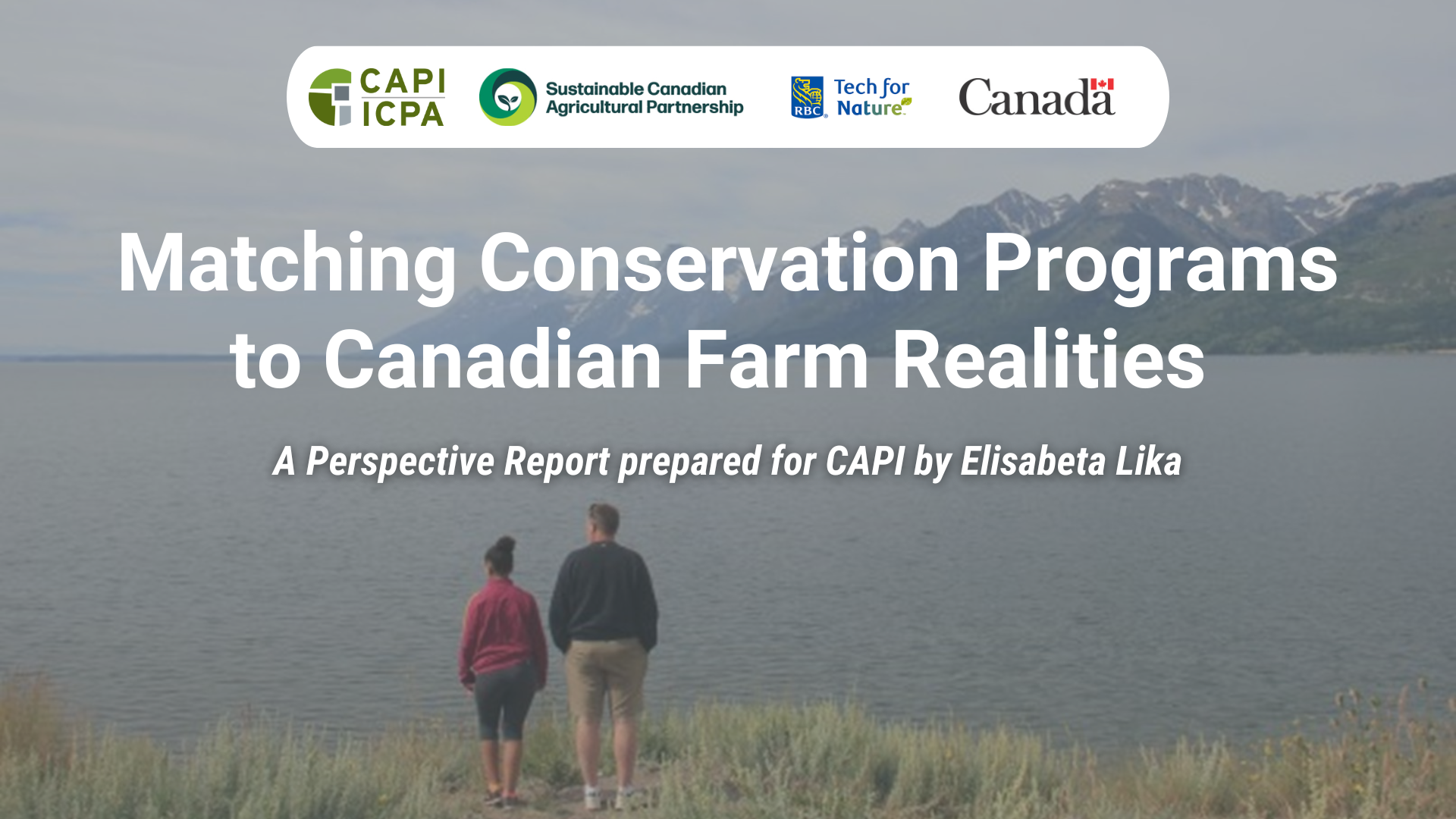Matching Conservation Programs to Canadian Farm Realities

Note from CAPI
Canadian farmers manage more than 62 million hectares of land. The decisions they make shape not only food supply but also soil health, water quality, and biodiversity. As pressures on agriculture increase, the challenge of supporting both productivity and conservation is becoming more urgent.
Conservation payment programs are one of the main tools governments, philanthropy and the private sector have used to address this challenge. In principle, they share the costs of practices that deliver environmental benefits to the public. In practice, their effectiveness depends on how well they reflect farm realities and whether farmers see them as accessible and credible.
This report draws on a national survey of farmers to explore how these programs are experienced on the ground. The goal is to encourage constructive discussion about how conservation payments can be improved and strengthened as a tool that works for both farmers and the environment.
This report is one part of a broader initiative by CAPI to explore how conservation and agriculture can advance together, recognizing their shared role in sustaining Canada’s land and food systems. Additional work will build on these findings to support informed dialogue and practical policy solutions.
Key Takeaways
- Conservation program awareness and participation remain low. Only 7% of farmers are very familiar with available programs, and just one-third have participated, highlighting a need for better outreach and engagement.
- Government conservation payments do not drive farm decisions. Input costs and commodity prices are the top influences on land use, while government conservation payments are rarely a deciding factor.
- Barriers to participation are clear and consistent. Complex applications, insufficient payments, and inflexible requirements are the most common reasons farmers do not engage with existing programs.
- Canada’s agricultural diversity requires tailored solutions. Regional and farm-level differences in priorities, challenges, and preferences show that a one-size-fits-all approach is not effective.
- Farmers want programs that connect economic and environmental goals. There is farmer support for simpler, more flexible, and regionally relevant programs that help farmers improve both profitability and stewardship.
